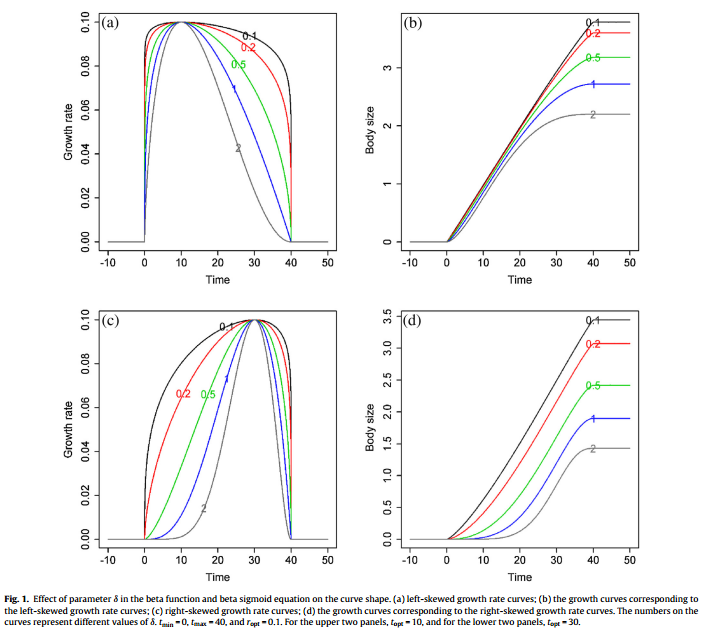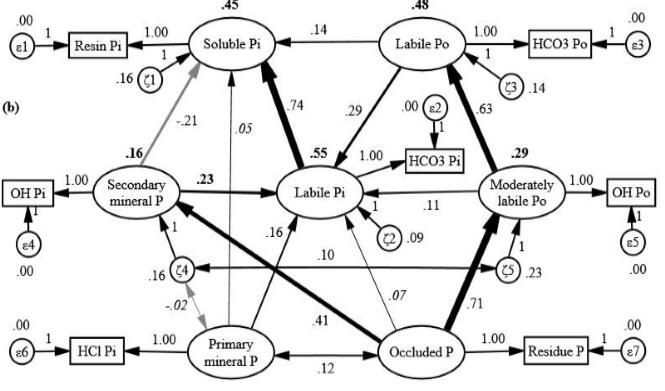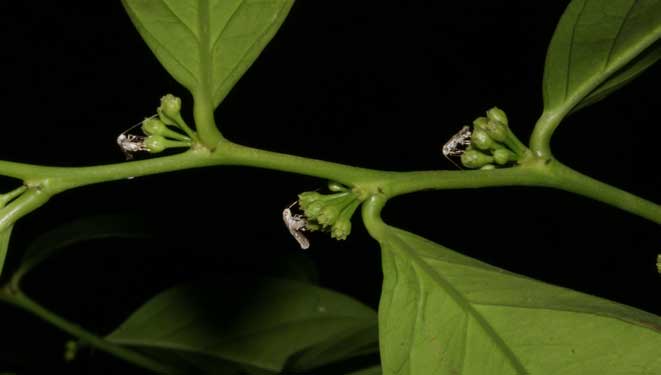News
-
2017-04-01Comparison of two ontogenetic growth equations for animals and plantsOntogenetic growth reflects the changes of biomass , height ( or body length ) of a biological organism as a function of time .They obtained the growth equations by integrating two time-dependent growth equations which were obtained by replacing temperature with time in two non-linear mathematical models that describe the temperature-dependent d... Ontogenetic growth reflects the changes of biomass, height (or body length) of a biological organism as a function of time. Many growth equations have been built but few can accurately predict the ending time of growth.Read More
Professor Huang Jianguo (correspondence, Forest Ecology and Simulation Research Group, South China Botanical Garden, Chines... -
2017-02-22Phosphorus Fraction, Transformation and Regulation in Forested SoilsAssessing nutrient availability for ecosystem gross primary productivity of global forests especially complex diversified tropical and subtropical forests is a fundamental and crucial work .And soil P cycling remained active and even more efficient in the late successional old-growth forests than in the earlier pioneers because of remarkably hig... Assessing nutrient availability for ecosystem gross primary productivity of global forests especially complex diversified tropical and subtropical forests is a fundamental and crucial work. Analyses from forest succession showed that soil microorganisms and specific chemical processes may coordinate closely to maintain high levels of available o...Read More
-
2017-02-17The Moth That Plays Cupid: A Species Of Moth Spends Nearly Its Entire Life Cycle Inside Its Tree Host, Emerging Only To Assure Its ReproductionIn a study appearing in The American Naturalist .Scientists in China and the United States report the discovery of a symbiotic relationship between a tropical tree and a tiny moth which is one of the most intricately interconnected relationships between a plant and its pollinator ever described .Examining dried specimens of the leafflower tree G...Read More
In a study appearing in The American Naturalist, scientists in China and the United States report the discovery of a symbiotic relationship between a tropical tree and a tiny moth which is one of the most intricately interconnected relationships between a plant and its pollinator ever described.
Examining dried specimens of the leafflow... -
2017-01-24The Floral Development, Structure Of The Stamens And Staminodes In The Monoecious Pseuduvaria trimera (Annonaceae)Flowering plants exhibit spectacular sexual diversity .The formation of unisexual flowers is thought to promote outcrossing , prevent inbreeding depression , and enhance genetic variability .And the morphological and anatomical features of its mature stamens and staminodes were investigated by Yang and Xu . The data suggest that staminate flower...Read More
Flowering plants exhibit spectacular sexual diversity. The formation of unisexual flowers is thought to promote outcrossing, prevent inbreeding depression, and enhance genetic variability. The Annonaceae are one of the largest families of Magnoliales. The family comprises diverse unisexuality. The comparative development of staminate and pi... -
2017-01-24The Comparison Of Synandrium Structure And Development In Three Species From The MyristicaceaeTo clarify the origin of the synandrium , comparative development and anatomy of the synandria of M . fragrans , H . pandurifolia , and H . tetratepala were investigated by Yang and Xu . Three types of synandrium origin were observed : in M . fragrans .Anatomy of staminate flower buds in Horsfieldia pandurifolia during the meiotic stage of micro...Read More
Myristicaceae is classified in the Magnoliales, an order of basal angiosperms. The plants of this family are dioecious and the flowers are described as unisexual with a single perianth. The male flowers are characterized by the presence of a distinctive androecium composed of a sterile column, and longitudinally oriented anthers fused to th... -
2017-01-19The DNA Barcoding Study of Oberonia Lindl. (Orchidaceae) In ChinaThe orchid genus Oberonia Lindl . , is a taxonomically complex genus characterized by recent species radiations and many closely related species .All Oberonia species are under conservation as listed in the CITES and the IUCN Red List Categories and Criteria . Given its difficulties in taxonomy and conservation status , Oberonia is an excellent ...Read More
The orchid genus Oberonia Lindl., is a taxonomically complex genus characterized by recent species radiations and many closely related species. All Oberonia species are under conservation as listed in the CITES and the IUCN Red List Categories and Criteria. Given its difficulties in taxonomy and conservation status, Oberonia is an excellent... -
2017-01-12Urban farmingBy 2040 , Chinese cities will house a billion residents , and the need to provide fresh food for this large population will become a greater challenge .Urban development reduces arable land for traditional agriculture while urban industrialization pushes clean growing areas further away from urban centers .In 2016 , PhD student LIU Ting and coll... By 2040, Chinese cities will house a billion residents, and the need to provide fresh food for this large population will become a greater challenge. Urban development reduces arable land for traditional agriculture while urban industrialization pushes clean growing areas further away from urban centers. Hence, not only is China facing the prosp...Read More
-
2016-10-21Cooking reduced the bioaccessibility of toxic metals in rice and vegetablesThere is a growing concern about heavy or toxic metals pollution in foodcrops , since dietary intake is considered to be one of the major routes of metal ( loid ) exposure to humans .Cadmium ( Cd ) , lead ( Pb ) and Arsenic ( As ) are among the most common toxic heavy metals .Therefore , food safety has emerged as an urgent issue and there is a ... There is a growing concern about heavy or toxic metals pollution in foodcrops, since dietary intake is considered to be one of the major routes of metal(loid) exposure to humans. Cadmium (Cd), lead (Pb) and Arsenic (As) are among the most common toxic heavy metals. The excessive levels of these metals in foodcrops are associated with etiology of...Read More


